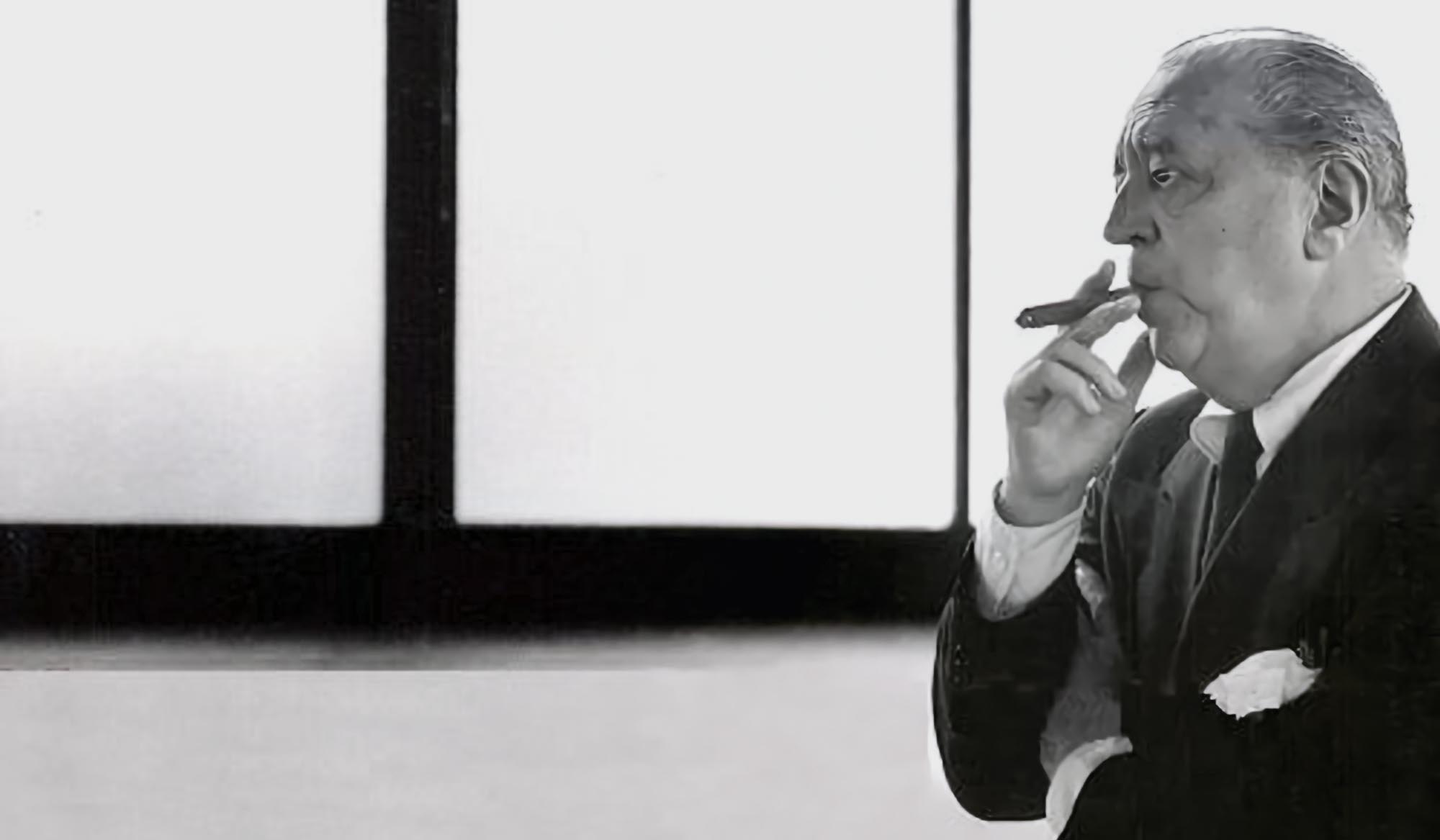Creators
Mies van der Rohe: Manifesto of Modern Architecture
Mies called his buildings ``skin and bones`` architecture. He sought a rational approach that would guide the creative process of architectural design, and is most often quoted for saying ``less is more`` and ``God is in the details``.
Ludwig Mies van der Rohe defined modern architecture as what later became known as the international style. A was a true modernist and a design icon of the 20th century. He started his career as an apprentice for Peter Behrens in 1908. There he made friends with his co-workers and fellow modernists Walter Gropius and Le Corbusier. A few years later, after returning from the war, Mies would reunite with them in 1919 to become the third and last director at the Bauhaus School they founded. After the school closed he emigrated to Chicago in 1938. It was Mies that brought this Bauhaus intentional style of modern architecture that would soon define modernism in the USA.
The modernist movement was about simplicity and detail. Mies believed modern architecture was about a unified expression, not ornamentation. His designs of the Barcelona Pavilion 1929, Farnsworth House 1945, and Seagram Building 1958, are still studied by historians and architecture students around the world today. Of course, his imprint on Chicago is undeniable. From Federal Plaza to the IIT campus, his designs are some of the most recognizable Chicago buildings still today.
In 1953 Mies gave a lecture titled With Infinite Slowness Arises the Great Form. We consider this his manifesto on modern architecture. The following is a transcription of the original manuscript.
“With Infinite Slowness Arises the Great Form” (1953)
Ladies and Gentlemen:
The attempt to revitalize the building art from the direction of form has failed. A century’s worth of effort has been wasted and leads into the void. That heroic revolution of extremely talented men at the turn of the century had a time span of a fashion. The invention of forms is obviously not the task of the building art. Building art is more and different. Its excellent name already makes it clear that building is its natural content and art its completion.
2. Building, where it became great, was almost always indebted to construction, and construction was almost always the conveyor of its spatial form. Romantic and Gothic demonstrate that in a brilliant clarity. Here is there, structure expresses the meaning, expresses it down to the last remnant of spiritual value. But if that is so, then it must follow that the revitalization of the building art can only come from construction and not by means of arbitrarily assembled motifs.
3. But construction, that loyal safe keeper of an epoch’s spirit, had rejected all that was arbitrary and created an objective basis for developments. And so it has happened here also. The few authentic structures of our period exhibit construction as a component of building. Building and meaning are one. The manner of building is decisive and of testimonial significance.
4. Construction not only determines form but is form itself. Where authentic construction encounters authentic contents, authentic works result: works genuine and intrinsic. And they are necessary. Necessary in themselves and also as members of a genuine order. One can only order what is already ordered in itself. Order is more than organization. Organization is the determination of function.
5. Order, however, imparts meaning. If we could give to each thing what intrinsically belongs to it, then all things would easily fall into their proper place; only there they could really be what they are and there they would fully realize themselves. The chaos in which we live would give way to order and the world would again become meaningful and beautiful.
6. But that means to let go of self-will and do the necessary. To articulate and realize the timely and not prevent what wants to and must become.
7. In other words: serve rather than rule. Only those who know how hard it is to do even simple things properly can respect the immensity of the task. It means to preserve humbly, renounce effects, and do what is necessary and right with loyalty.
8. Only yesterday on spoke of the eternal forms of art, today one speaks of its dynamic change. Neither is right. Building art is beholden neither to the day nor to eternity, but to the epoch. Only a historical movement offers it space for living and allows it to fulfill itself. Building art is the expression of what historically transpires. Authentic expression of an inner movement.
9. Fulfillment and expression of something immanent. This may also be the reason why the nineteenth century failed. Unsuspected and deep beneath all the confused attempts of that time ran the quiet current of change. Fed by forces of a world that was intrinsically already different, and a jungle of new forms broke out. Unusual and of wild power. The world of technical forms; large and forceful.
10. Genuine forms of a genuine world. Everything else that occurred looked, next to that pale and marginal. Technology promises both power and grandeur, a dangerous promise for man who has been created for neither one nor the other. Those who are truly responsible feel depressed and respond to this promise by searching for the dignity and value of technology.
11. Is the world as it presents itself bearable for man? More: is it worth of man or too lowly? Does it offer room for the highest form of human dignity? Can it be shaped so as to be worthwhile to live in?
12. And finally: is the world noble enough to respond to man’s duty to erect a high and magnanimous order? These are questions of immense weight. One can quickly affirm them and quickly negate them, and one has done that.
13. To the careful, however, beyond all prejudices and misjudgments, technology appears as a world which is what it is, specific and narrow, dependent on the panorama of its own time just as any other building art, and precluding a host of possibilities.
14. There is no reason to overestimate this form. But it is, like all other authentic forms, both deep and high. Called to the one, attempting the other. A real world — if that this true, then technology, too, must change into building art to complete itself. It would be a building art that inherits the Gothic legacy. It is our greatest hope.
15. But none of this comes about by itself. History does not come about by itself. History must be done. And historical measurements are shorter than many realize. Only thirty life spans separate us from the Acropolis. And the breathing span of the Middle Ages was too short for it to complete tits cathedrals. We have all reason to be wide awake and not sleep away our time.
16. Furthermore, the technological age is not as young as it may appear. Whitehead transferred the hour of its birth into the seventeenth century. That may be. The ultimate reasons for what occurs today may be found in the discussion of lonely monks behind quiet Romanesque monastery walls.
17. With infinite slowness arises the great form, the birth of which is the meaning of the epoch. But a reconciliatory forgiving kindness of history permits great things to die in their greatness and spares them from old age. Not everything that happens takes place in full view. The decisive battles of the spire tare waged on invisible battlefields.
18. The visible is only the final step of a historical form. Its fulfillment. Its true fulfillment. Then it breaks off. And a new world arises.
19. What I have said is the ground on which I stand; that which I believe and the justification of my deeds. Convictions are necessary, but in the realm of one’s work they have only limited significance. in the final analysis it is the performance that matters. That is what Goethemenat when he said: Create, artist, do not talk.
Upon arriving in Chicago in 1938 Mies became the Director of Architecture at the Illinois Institute of Technology. Following in the footsteps of Burnham and Root, Sullivan, and Jenny, Mies would perfect what was known in modern architecture as the Chicago School of Architecture. A new language for building based in rational and building technology. He would remain at IIT for 20 years before resigning in 1958 at the age of 72.
Top 10 Mies van der Rohe Buildings
- Barcelona Pavilion (Barcelona, Spain) – This iconic structure was designed for the 1929 International Exposition in Barcelona. Its minimalistic design and use of materials like marble, glass, and steel are quintessential Mies.
- Farnsworth House (Plano, Illinois, USA) – A masterpiece of modernist architecture, this single-story house exemplifies Mies’ “less is more” philosophy. Its transparent walls blur the distinction between indoor and outdoor spaces.
- Seagram Building (New York City, USA) – Completed in 1958, the Seagram Building is one of the most important landmarks of modernist architecture. Its sleek bronze and glass facade set a new standard for skyscraper design.
- Lake Shore Drive Apartments (Chicago, Illinois, USA) – These residential towers showcase Mies’ innovative use of steel and glass. Their minimalist design and efficient use of space remain influential in urban housing.
- Crown Hall, Illinois Institute of Technology (Chicago, Illinois, USA) – As the home of the College of Architecture at IIT, Crown Hall is a prime example of Mies’ structural honesty and open plan design.
- 860–880 Lake Shore Drive Apartments (Chicago, Illinois, USA) – These twin apartment towers are celebrated for their elegant simplicity and structural innovation. They represent Mies’ vision for urban living.
- Berlin National Gallery (Berlin, Germany) – This museum complex, also known as the Neue Nationalgalerie, features Mies’ signature steel and glass construction. It’s a symbol of post-war Germany’s commitment to culture and modernity.
- Toronto-Dominion Centre (Toronto, Canada) – Completed in 1967, this office complex is one of the most prominent examples of modernist architecture in Canada. Its bronze-tinted glass towers are a testament to Mies’ influence on international design.
- S. R. Crown Hall, IIT Campus (Chicago, Illinois, USA) – Another masterpiece on the Illinois Institute of Technology campus, this building is an exemplar of Mies’ architectural principles and remains an enduring symbol of modernism.
- Westmount Square (Montreal, Canada) – This mixed-use complex features residential apartments, office space, and retail areas. Its striking design and integration into the surrounding urban fabric reflect Mies’ vision for harmonious architecture in the cityscape.
These buildings showcase Mies van der Rohe’s enduring impact on modern architecture and continue to inspire architects and designers worldwide.


